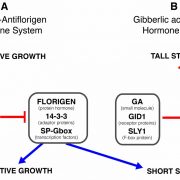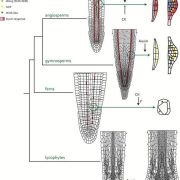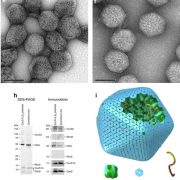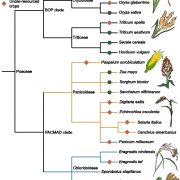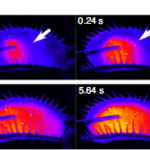Glucosylation prevents plant defense activation in phloem-feeding insects (Nature Chem. Biol.)
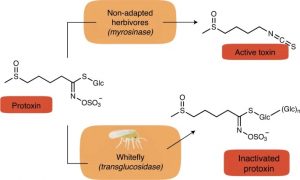 Brassicas produce specialized metabolites called glucosinolates that can be enzymatically converted to release toxic compounds. The catalyzing enzyme is stored in a separate subcellular compartment, so upon wounding by a herbivore the enzyme and substrate mix and release the toxin. Phloem-feeding insects insert a slender stylet into plant tissues, which has been assumed to avoid mixing the enzyme and substrate and to be a reason that these stylet-feeders are less affected by the defensive compounds. Here, Malka et al. show that in fact the phloem feeding insects have a distinct, chemical defense mechanism. The authors found that these insects chemically modify the protoxin glucosinolates through the addition of glucose residues. This reaction is catalyzed by glycoside hydrolases, which are abundant in phloem-feeding insects. This study shows a novel means by which insects can evade plant defenses, and reveals a potential target through which to control these damaging pests. (Summary by Mary Williams @PlantTeaching) Nature Chem. Biol. 10.1038/s41589-020-00658-6
Brassicas produce specialized metabolites called glucosinolates that can be enzymatically converted to release toxic compounds. The catalyzing enzyme is stored in a separate subcellular compartment, so upon wounding by a herbivore the enzyme and substrate mix and release the toxin. Phloem-feeding insects insert a slender stylet into plant tissues, which has been assumed to avoid mixing the enzyme and substrate and to be a reason that these stylet-feeders are less affected by the defensive compounds. Here, Malka et al. show that in fact the phloem feeding insects have a distinct, chemical defense mechanism. The authors found that these insects chemically modify the protoxin glucosinolates through the addition of glucose residues. This reaction is catalyzed by glycoside hydrolases, which are abundant in phloem-feeding insects. This study shows a novel means by which insects can evade plant defenses, and reveals a potential target through which to control these damaging pests. (Summary by Mary Williams @PlantTeaching) Nature Chem. Biol. 10.1038/s41589-020-00658-6




